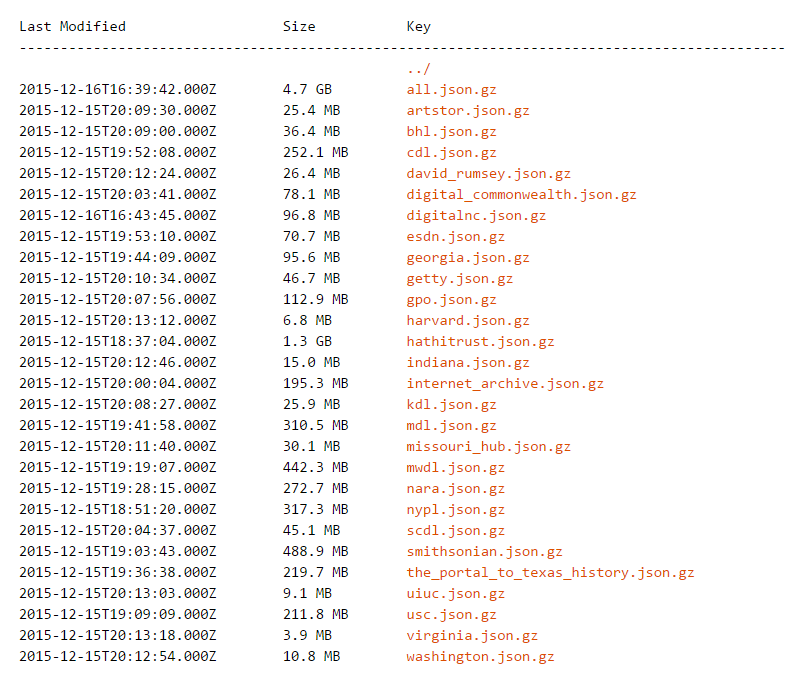Finding Aid-LD: Implementing Linked Data in a Finding Aid Environment
Jacob Shelby
Overview
- Archival Experience as Linked Data
- Linked Data Publishing Strategies
- Proposed Framework for Publishing Finding Aids as Linked Data
- Proof-of-Concept Application of Linked Data Finding Aids
- Advantages of Linked Data
- Challenges
- Steps That Can Be Taken to Prepare for Linked Data in a Finding Aid Environment
- Future Research
Archival Experience as Linked Data
- The archive world deals in hierarchy
- Current practice is with EAD/XML
Collection
Series
File
in box 2, folder 10
File
in box 2, folder 11
Series
Subseries
File
in box 10, folder 1
Archival Experience as Linked Data
- Linked Data hierarchy comes from linking + things
Collection
Series 2
Series 1
Box 10
Box 2
Subseries 1
File 3
File 2
File 1
Folder 11
Folder 10
Folder 1
Publishing Strategies: Data Dump

image from DPLA bulk download
Publishing Strategies: Triplestore and SPARQL
- Triplestore is a database for Linked Data
- SPARQL is the query language for RDF
- Use-case: Researcher wants to run complex, semantic querying of the data
- Example: DBpedia SPARQL endpoint
Publishing Strategies: Triple Pattern Fragments
- Queries data using triple patterns (subject, predicate, object)
- Example: Triple Pattern Fragment server
- Example: Triple Pattern Fragment client
- Uses triple patterns to query SPARQL-style
Publishing Strategies: Subject Pages
- Creation of a document for each resource (similar to a traditional metadata record)
- Content negotiation
- URI redirects to human or machine readable file based on HTTP ACCEPT
- Use-case: User wants to dereference a URI and discover new knowledge by browsing links
- Example: DBpedia subject page for Christopher Lee
Proposed Method for Publishing Finding Aids
Subject page for each resource
- e.g. Collection, Series, Box, Item, *Finding Aid
- Content negotiation, HTML and RDF
- Embedded metadata in the HTML
- Flat folder structure
Arbitrary URIs for resources
Proposed Method for Publishing Finding Aids

Proof of Concept
Advantages of Linked Data
- Semantic data = more meaningful querying
- Strong framework for linking to and among resources
- Modular data
- Varied and specialized ways of publishing and presenting data
- Straightens out "complex reality"
Challenges
- Requires stable URIs
- Use Linked Data for descriptive metadata or as a replacement of EAD/XML?
- If former, becomes an additional layer to finding aid publishing
- If latter, will need data remodeling
Steps to Prepare
- Utilize @id to assign arbitrary ID's when possible
- Use (inter)national authorities and utilize @source
- Make your data as clean and consistent as possible
Future Research
- Triple Pattern Fragments
- Linked Data API
- Technical infrastructure for publishing Linked Data finding aids
- Actual data modeling
Questions?
Resources
- DBpedia, Data Set 3.4. Retrieved from http://dbpedia.org/data-set-34
- Digital Public Library of America. Bulk download. Retrieved from http://dp.la/info/developers/download/?prefix=2015/12
- DBpedia, Virtuoso SPARQL query editor. Retrieved from http://dbpedia.org/sparql
- Multimedia Lab, Ghent University & iMinds. Data portal @ linkeddatafragments.org. Retrieved from http://data.linkeddatafragments.org/
- Multimedia Lab, Ghent University & iMinds. Linked Data Fragments client. Retrieved from http://client.linkeddatafragments.org/
- DBpedia, about: Christopher Lee. Retrieved from http://dbpedia.org/page/Christopher_Lee
- Shelby, J. (n.d.). Linked data finding aid example. Retrieved from http://jacobshelby.org/examples/linkedData/FindingAid_001
- Multimedia Lab, Ghent University & iMinds. In depth: what is a Triple Pattern Fragment? Retrieved from http://linkeddatafragments.org/in-depth/#tpf
- GitHub. linked-data-api/Specification.md. Retrieved from https://github.com/UKGovLD/linked-data-api/blob/wiki/Specification.md
Finding Aid-LD: Implementing Linked Data in a Finding Aid Environment
By Jacob Shelby
Finding Aid-LD: Implementing Linked Data in a Finding Aid Environment
The slides to a talk I presented at Mashcat 2016.
- 3,431
